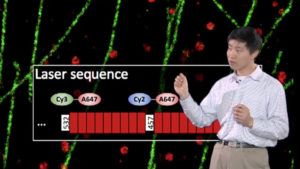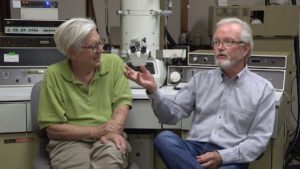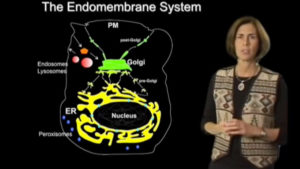David Agard describes several methods for approximately doubling the resolution of the light microscope, including the technique of structured Illumination microscopy. (Talk recorded in July 2012)

- Researcher
Bringing the World's Best Biology to You
David Agard describes several methods for approximately doubling the resolution of the light microscope, including the technique of structured Illumination microscopy. (Talk recorded in July 2012)

Bo Huang describes super-resolution localization microscopy techniques such as STORM, PALM, FPALM, and GSDIM, and explains how to extend these techniques to 3D imaging. (Talk recorded in April 2012)

Stefan Hell describes two super-resolution microscopy techniques: STED (Stimulated Emission Depletion) and RESOLFT (REversible Saturable OpticaL Fluorescence Transitions). (Talk recorded in May 2013)

Xiaowei Zhuang discusses how super-resolution microscopy allows scientists to obtain images with much better resolution and to study cell dynamics in greater detail. (Talk recorded in July 2011)


 Series Directors: Ron Vale, Nico Stuurman, and Kurt Thorn This 14 lecture series provides a good overview for the techniques of light microscopy. Leading scientists in light microscopy cover the basics of optics, transmitted light, fluorescence and GFP, digital imaging, and recent advances in super-resolution microscopy. The course is appropriate for undergraduates or anyone who…
Series Directors: Ron Vale, Nico Stuurman, and Kurt Thorn This 14 lecture series provides a good overview for the techniques of light microscopy. Leading scientists in light microscopy cover the basics of optics, transmitted light, fluorescence and GFP, digital imaging, and recent advances in super-resolution microscopy. The course is appropriate for undergraduates or anyone who… Dr. Huang’s research focuses on using super-resolution microscopy and single-molecule imaging to understand how proteins form large complexes and how proteins interact to regulate signaling. Huang is an Assistant Professor in Pharmaceutical Chemistry and in Biochemistry and Biophysics at UC San Francisco.
Dr. Huang’s research focuses on using super-resolution microscopy and single-molecule imaging to understand how proteins form large complexes and how proteins interact to regulate signaling. Huang is an Assistant Professor in Pharmaceutical Chemistry and in Biochemistry and Biophysics at UC San Francisco. Eric Betzig is a Group Leader at The Howard Hughes Medical Institute’s Janelia Farm Research Campus. Together with Harald Hess and individually, Eric Betzig continues to develop new imaging methods that can be used to peer more and more deeply into tissues and cells. Eric Betzig was awarded the 2014 Nobel Prize in Chemistry for his…
Eric Betzig is a Group Leader at The Howard Hughes Medical Institute’s Janelia Farm Research Campus. Together with Harald Hess and individually, Eric Betzig continues to develop new imaging methods that can be used to peer more and more deeply into tissues and cells. Eric Betzig was awarded the 2014 Nobel Prize in Chemistry for his…Two pioneering electron microscopists, John Heuser and Tom Reese, reminisce about their early attempts to image synaptic vesicle transmission. (Talk recorded in July 2015)



Ron Vale provides an overview of the historical contributions from light microscopy to the life sciences and an overview of current exciting developments. This talk is in the Short Microscopy Series. (Talk recorded in March 2012)

Ron Vale provides an overview of the historical contributions from light microscopy to the life sciences and an overview of current exciting developments. (Talk recorded in )

Harald Hess and Eric Betzig talk about the work that led to the development of the first super-high-resolution microscope for PALM microscopy. (Talk recorded in September 2010)

Dr. Lippincott-Schwartz talks about breakthroughs in intracellular fluorescent microscopy that allow the visualization and quantification of molecular interactions within living cells and organisms (Talk recorded in October 2009)


